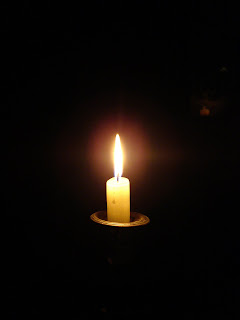We lead a sedentary lifestyle with no time for ourselves. This doesn’t affect us right away but in the long run results in backaches, frozen shoulder, neck pains, carpal tunnel syndrome (or RSI) and the list goes on. All these and more can be avoided with some simple exercises.
Working in front of a computer, sitting at a desk or driving are all sedentary activities. These lead to strain on your neck, shoulder, back and wrist which leads to tension and stiffness causing pain. Simple asanas modified to fit your work place will help ease the tension in your body, increase the muscles strength, improve flexibility and most importantly refreshes your tired mind.
The four important points you need to remember for your day to day life are:
- Right posture
- Breathe right
- Stretch
- Relax
Believe it or not these are the four simple things that will make you more flexible and pour new energy into you.
RIGHT POSTURE

We have learnt the importance of spine and right posture when we were in school. But down the line we have forgotten its importance. Spine is like the hose the more you bend it the less circulation of blood in your body. So stand or sit erect. It is never too late to correct your posture while standing and sitting.
- While standing or sitting you should make sure that your body weight is evenly distributed between the legs or buttocks. Make sure you don’t lean to one particular side.
- When you stand your legs should be parallel to one another
- Don’t dangle you feel while sitting make sure they are flat on the ground
- Sit or stand straight and tall but don’t over do it. If you feel a lot of stress in your back then its not the right posture.
BREATHE RIGHT
We all breathe but do we breathe right? Most of us breathe quickly & don’t really breathe in. What I mean is the right way of breathing is to take deep breaths and when you breathe in your stomach swells up, when you breathe out it goes in.
Try it! Many of us don’t do it this way. If you practice this you will get used to it and there will be more oxygen in your system. More oxygen means more energy.
STRETCH
Have every seen a cat or dog wake up from sleep? The first thing they do is stretch their entire body. We should ideally do this every morning.
The minute a particular muscle is unused for a long time they get rigid. By stretching your muscles remain supple and flexible.
- Ankle rotations (clockwise and anti-clockwise)and flexing
- Stretch your legs while sitting at your desk. Try to keep your leg straight from the knee and hold that position for at least 20 counts for each leg. This strengthens your knee and the muscles around it. You should not cross your legs under the desk as it cuts circulation of blood.

- Sit on your chair or stand and bend down to touch your toes.

- Shoulder shrugs helps ease the tension in your shoulder.

- Clasp your hands and turn the palm up. Now stretch up and pull yourself up - Straight & side-ways. This will not only stretch your shoulder but also stretch your trunk muscles. You can do this sitting or standing.

- Clasp your hands behind and bend forward. This gives a good stretch to your hands, back & shoulder.
- Do namaste, keep your fore arms parallel to the floor and move your hands up and down. This exercises your wrist, arms and shoulders.

- Wrist rotation with fingers closed fist, wrist flexing with open palms and fingers stretching. Do this especially if you are using the computer a lot. It will help avoid the Repetitive Strain Injury (RSI). You can even use a foam ball to exercise your fingers.


- Neck stretches: side to side, drop to shoulder, up and down and complete circle.

Ø Eye exercises: blink a lot, move the eye balls from side to side, up and down, diagonal and in circle. If you cannot do it all together then do it one at a time & close your eyes for a few seconds before you start the next exercise.
Listed here are only some of the stretches that can be done at work. There are many more that can be done but cannot be added to this article.
RELAX
It is very important to relax even if it means for a short time. A break from your work will help you think better and perform better. I don’t mean going for a holiday right in the middle of work but something short and crisp.
- Try cupping your eyes for a few seconds when you are using the computer this will relax your eyes and refresh your mind.

- Every 45 mins to 1 hour get up from your seat walk for a minute or two.
- Drink a lot of water. Keeps you hydrated
- Sit on your seat with your eyes closed and to avoid thinking concentrate on all the sounds you can hear around you. You may catch some gossip if you hear closely!
In this fast food age many find it very difficult to take time out for fitness which is understandable. But these simple tips can go a long way in reducing your doctor and medical bill. Like fast food this is fast yoga which will keep you flexible, energetic and fast!













